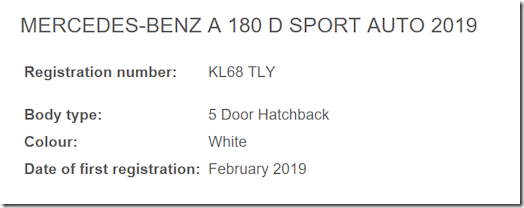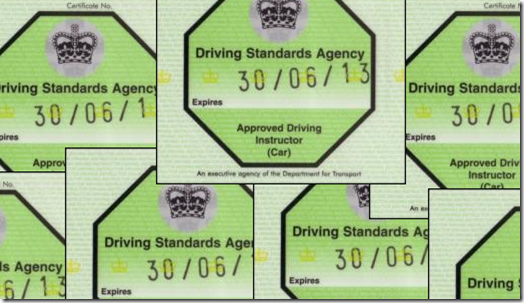 This article is now obsolete, as it partly dates from 2010 and includes details up to 2018. I have written a new article outlining my badge renewal in 2022. Things are slightly easier now.
This article is now obsolete, as it partly dates from 2010 and includes details up to 2018. I have written a new article outlining my badge renewal in 2022. Things are slightly easier now.
My ADI badge was due for renewal in October 2018. I got the initial alert that my DBS check (formerly the CRB check) needed to be renewed in early April – 6 months before my badge expired. This alert came from DVSA via email.
I applied for my DBS immediately online. DVSA supplies you with a PIN number and a secret word. You apply via an online form.
Once you have completed your DBS application, you take a printout of the completed form along with the necessary documents to a Post Office branch that does identity/document checks (you can find a branch at GOV.UK). Note that your local Post Office will almost certainly not have this facility – you will need to go to one likely to be situated in the middle of a large city, with no easy parking, and with queues of people with prams and other annoying things, doing what people who use Post Office branches in the first place usually do. In other words, be prepared for a long wait.
This article is obsolete. I’ve written a new article for my badge renewal in 2022.
Be careful with your initial DBS application. I am paperless, so had to go to my bank separately to get an official bank statement printed out as one of my check documents. You have to physically put the date of the statement on your application form – even though it is clearly printed on the actual statement. The problem is that you can only use a date in the past, so get the statement first, then fill the form in the next day. Trust me: if the statement date is today or in the future, the online system won’t let you proceed, and if you try to post date it, the Post Office will reject it because the dates won’t match.
When I did mine in October last year, I used my driving licence as a check document (and you probably will be, too). At that time, the date you had to physically enter on the form was the date you passed your test. It was NOT, as you might reasonably expect (as I did), the “valid from” date on the front of your licence (i.e. when you last did your photo update). It was totally f—ing stupid, but that’s how it is, and it isn’t explained anywhere that I could find (nor was it such an issue any of the previous times I had a CRB/DBS check done). The woman at the Post Office told me it catches a lot of other people out , too. Basically, if you don’t remember the exact date you passed your test (and I bloody well didn’t), you have to infer the date from the list of entitlements on the back of it.
As an update to the date on your licence thing, a reader emailed me recently (May 2019) and told me that he had used his pass date, as I outlined above, and the idiots had rejected it and wanted his “valid from” date from the front of the licence. He tells me he was shown the document dated January 2019, so it seems the morons have moved the goalposts and not told anyone. Just be aware of this if yours is due – it looks like the required date is now the one on the front of the licence, which it definitely wasn’t when I did it (though it should have been)!
This article is obsolete. I’ve written a new article for my badge renewal in 2022.
It’s a stupid system, because the dates on bank statements and driving licences are integral to those documents, and all you are effectively being checked on is whether they caught you out when asking you to write them down on a separate form. It’s even more stupid when you get it wrong, and the Post Office worker shows you how to fill it in properly with the correct figures, so you go away (you have to generate another form) and make the corrections. There is no security aspect to it whatsoever.
I used my passport, my driving licence, and a bank statement as my check documents. I had recently had to apply for a new passport and used this instead of my birth certificate (which has to be an original, and not a copy like mine is).
My DBS certificate came through about seven days after the document check was completed (the check at the Post Office triggers your application process). It costs £6.00 for the service.
Now we come to the actual renewal of your Green Badge. There is no warning later in the year from DVSA – it’s up to you to keep track of your application.
Every Green Badge expires on the last day of whatever month you originally registered in. You apply to renew as soon as possible in the month in question. In my case, with my badge expiring on 31 October, I had to apply any time from 1 October (I would not have been allowed to do it on 30 September).
This article is obsolete. I’ve written a new article for my badge renewal in 2022.
You simply log into the IRDT system – which every instructor should have access to – and make your application. You will need to provide the number on your DBS certificate, which DVSA will have a copy of/access to. You need a means to make payment (credit or debit card). It costs £300. I applied for mine on 1 October, and it was issued and is now current since 2 October. It arrived in the post 5 October, and has an expiry date of 31 October 2022. All set for another 4 years, now.
To summarise. Assuming you have a credit or debit card, and are not still holding out against technology and the internet, the times taken to actually get both the DBS and your new badge are very short. The documentation and chasing around required for the DBS application is a right pain in the arse, so plan ahead. Application for the Green Badge is simple.
On the other hand, if you insist on using paper money or cheques, won’t use the internet, or want to kick up a stink about which photo you want on your badge… good luck with that. I have no idea what to do in those circumstances.
This article is obsolete. I’ve written a new article for my badge renewal in 2022.

 My love affair with mango lassi started some years ago, after I’d been to a concert in Leeds. I was driving my mate home, and we decided to stop off for a curry.
My love affair with mango lassi started some years ago, after I’d been to a concert in Leeds. I was driving my mate home, and we decided to stop off for a curry. This article is now obsolete, as it partly dates from 2010 and includes details up to 2018.
This article is now obsolete, as it partly dates from 2010 and includes details up to 2018. 
 There’s a passage in Catch-22 where the Chaplain is musing over his misfortunes, and asks himself:
There’s a passage in Catch-22 where the Chaplain is musing over his misfortunes, and asks himself:

 Someone found the blog on the search term “what are the chances of passing your test in three months?”
Someone found the blog on the search term “what are the chances of passing your test in three months?” You will remember the Leave campaign’s Brexit bus, which stated:
You will remember the Leave campaign’s Brexit bus, which stated: